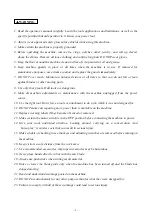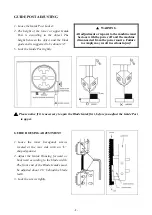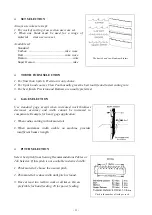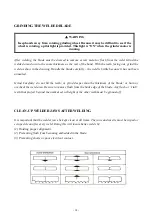
- 12 -
WIDTH SELECTION
Always use widest blade:
1. Available in desired pitch (thin work only).
2. That will cut the smallest radius required.
3. That the machine can handle.
Gage is the thickness of the band. Set is the offset of the teeth
measured at their widest point.
The radial in this chart are all based on cutting
1-inch thick mild steel and using manual feed. In
order to cut a close tolerance radius the
following factors, in addition to the blade width,
must be considered: thickness, machine ability,
feed force and the location of the pivot point.
Heavy feed in thick work, for example, results in
a barrel-shaped cut.
BLADE SELECTION
1. Blade characteristics to meet job requirements:
Tooth form – three standard types
Width – from 1/16 to 2 inches
Pitch – from 2 to 32
Gage – standard as well as extra heavy
Set – for parting or slotting.
2. Recommended blade from work planning system.
3. Proper break-in method, if use a new blade.
4. Operating conditions for lowest cost per cut.
Band speed – adjusted for each job
Work feed – selected for productivity
Coolant application – properly mixed and properly placed.
5. Blade removal point for maximum useful life.
Among the band machinist’s important decisions is the selection of saw blade with the best
characteristics for each sawing job.
Terms used to designate parts of a saw blade
Summary of Contents for VBS-2012H-CE
Page 1: ...OPERATOR S MANUAL VBS 2012H CE METALWORKING BANDSAW ...
Page 25: ... 24 ...
Page 28: ......
Page 30: ... 29 ...
Page 31: ... 30 ...




























